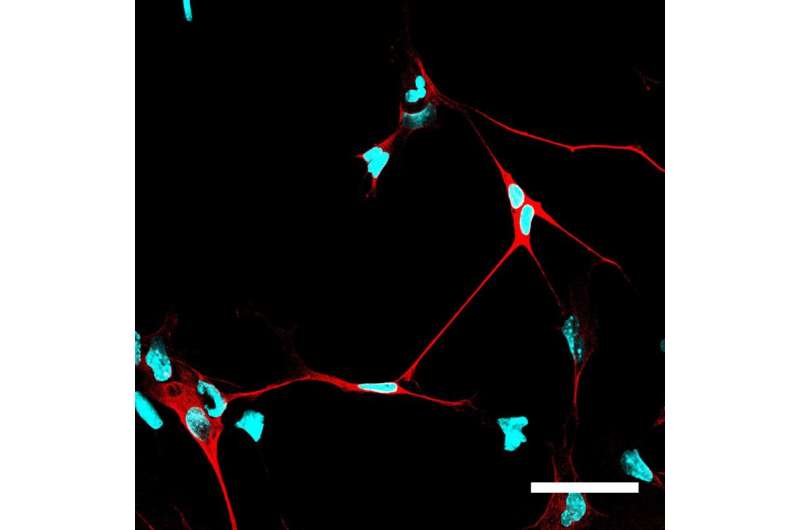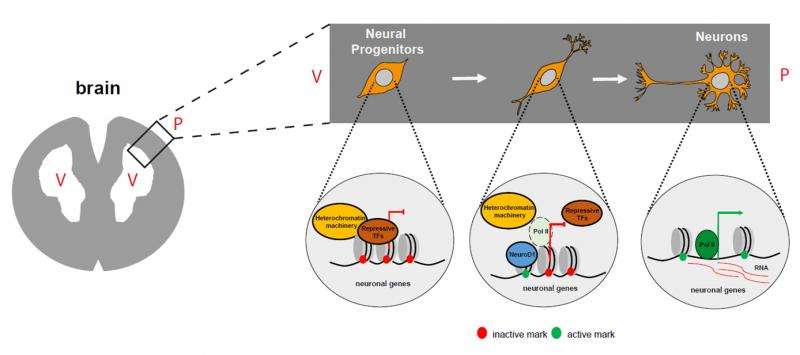Master switch for brain development found

Scientists at the Institute of Molecular Biology (IMB) in Mainz have unraveled a complex regulatory mechanism that explains how a single gene can drive the formation of brain cells. The research, published in The EMBO Journal, is an important step towards a better understanding of how the brain develops. It also harbors potential for regenerative medicine.
Neurodegenerative disorders, such as Parkinson's disease, are often characterized by an irreversible loss of brain cells (neurons). Unlike many other cell types in the body, neurons are generally not able to regenerate by themselves, so if the brain is damaged, it stays damaged. One hope of developing treatments for this kind of damage is to understand how the brain develops in the first place, and then try to imitate the process. However, the brain is also one of the most complex organs in the body, and very little is understood about the molecular pathways that guide its development.
Scientists in Dr. Vijay Tiwari's group at the Institute of Molecular Biology at Johannes Gutenberg University Mainz have been investigating a central gene in brain development, NeuroD1. This gene is expressed in the developing brain and marks the onset of neurogenesis.
In their research article, Tiwari and his colleagues have shown that during brain development NeuroD1 is not only expressed in brain stem cells but acts as a master regulator of a large number of genes that cause these cells to develop into neurons. They used a combination of neurobiology, epigenetics and computational biology approaches to show that these genes are normally turned off in development, but NeuroD1 activity changes their epigenetic state in order to turn them on. Strikingly, the researchers show that these genes remain switched on even after NeuroD1 is later switched off. They further show that this is because NeuroD1 activity leaves permanent epigenetic marks on these genes that keep them turned on, in other words it creates an epigenetic memory of neuronal differentiation in the cell.

Abhijeet Pataskar and Johannes Jung (joint first authors on the paper) explain the significance of this discovery: "Our research has shown how a single factor, NeuroD1, has the capacity to change the epigenetic landscape of the cell, resulting in a gene expression program that directs the generation of neurons."
Dr. Tiwari is excited about the implications of these findings, "This is a significant step towards understanding the relationship between DNA sequence, epigenetic changes and cell fate. It not only sheds new light on the formation of the brain during embryonic development but also opens up novel avenues for regenerative therapy."
More information: A. Pataskar et al. NeuroD1 reprograms chromatin and transcription factor landscapes to induce the neuronal program, The EMBO Journal (2015). DOI: 10.15252/embj.201591206
A. Glahs et al. Putting chromatin in its place: the pioneer factor NeuroD1 modulates chromatin state to drive cell fate decisions, The EMBO Journal (2015). DOI: 10.15252/embj.201593324



















